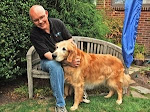2001 Seattle. Four nights. 9,000 young people. Alcohol. Music. Gunfire. Three riots. Cars overturned. Seventy-two (72) people treated at hospitals. One person dead. Another critically injured. For the second straight year of Mardi Gras rioting, nightlife as Seattle knew it was out of control.
These events occurred 11 months before I took the oath of office as your City Attorney. Following the riots, sensible people asked how a small segment of Seattle’s bar industry had come to gain so much control. The Seattle Times editorialized, “This city has a political policy of tolerating things it shouldn’t. Whether it is sentimentality or a fear of being accused of provocation, Seattle has a history of allowing small illegalities to grow into big problems…The fault lies with… tolerance of a culture that is permissive to the point of recklessness.”
Throughout the 2001 campaign, candidates for Seattle’s mayor, city council and city attorney were asked what they would do to crack down on alcohol-fused violence so that people could enjoy nightlife safely. Coming into office less than a year after the deadly Mardi Gras riots, we newly elected officials sought partnerships with the nightclub industry. But the industry wasn’t interested.
Working with the nationwide organization “The Responsible Hospitality Institute,” we learned that having the police department be the only contact with nightclubs was ineffective; police do not have the time or the expertise to deal with the health, fire or building codes. Headlines from around the country showed unenforced codes led to scores of deaths. In those cities, as in Seattle post-Mardi Gras, citizens demanded to know how this could happen. But everyone knows that when industries are unregulated, people get hurt. We formed a Joint Assessment Team, assembling inspectors to look at these codes, and other systemic and structural issues. Most importantly, we invited all 85 nightclubs in the West Precinct, an area from Magnolia, Queen Anne, Downtown, to Pioneer Square to sit down and work with us to find a better way. We wanted to partner with the clubs and explain what we were trying to accomplish. Only 15 clubs participated.
In 2005, the JAT inspected all 85 clubs over 14 nights. 77 clubs had a total of 203 fire code violations. 58 of the 203 violations involved emergency exits – some chained or blocked. And while club owners complained, the violations and the violence continued.
2005 Seattle. A man stabbed inside Larry’s in Pioneer Square is thrown into the street, by employees, to be rescued by a passerby. 2006 Seattle. Two men fired into a crowed hallway at Mr. Lucky's on Queen Anne, wounding three. 2007 Seattle. Shootings at Tabella, a Belltown club, narrowly miss condo residents. Nightclub-related violence had reached an all time high. 911 calls to nightclubs were taxing residents in more ways than money: from January 2006 to April 2007, the J&M Café had 50 police incident reports, followed by Venom with 37 and Tabella with 35.
Following a nightclub brawl in July 2007, The Seattle Times wrote, “Last weekend, 11 Seattle police officers and three police supervisors spent more than half an hour outside Aristocrats nightclub in Sodo, where a large crowd gathered. Shots were fired. Ten shell casings were found. No one was injured.” That time. But the need for a new approach was necessary so that we could keep Seattle safe, both Seattle’s club attendees and club neighbors.
Three common denominators fuel problems in nightclubs: service to minors, over-serving alcohol, and guns in clubs. In Washington, each of these is a crime. Every bartender and alcohol server in the State of Washington is required to take classes outlining the seriousness of these crimes, and class participants are notified that they are personally liable – with jail and 5-figure fines – if they break the law. For bar managers and owners, the liability, and the responsibility, is much higher.
To check the problems, we engaged Operation Sobering Thought, a sting on 15 problem-plagued clubs. Teenagers got into 14 of the 15 clubs. Guns got in to two clubs. Drunk patrons were served more alcohol in 4 clubs. 27 people were arrested; 17 entered plea agreements. As Seattle City Councilmember Sally Clark noted, “Overservice, serving a minor, and allowing a gun through the door are serious, life-threatening problems. It’s disappointing that the sting was so successful.”
Unregulated, unchecked clubs become a problem when the profit motive overcomes the responsibility to operate lawfully. When club owners and managers knowingly and willfully violate our laws, they put our young people at risk. The toll from deaths and injuries in the past 8 years is too high to ignore. But they also put every Seattle citizen at risk when your police department is used to clear out nightclubs, instead of responding to your burglary, assault or domestic violence calls.
Lobbyists for the Seattle Nightlife and Music Association would have you believe that clubs are closing because of my actions to protect our citizens. Nightclub owners have complained that “many in the industry are going out of business because of Tom Carr.” In fact, sales are up 17% -- in a recession . In 2009, there were 250 new liquor license applications – in the East Precinct (east of I-5, between the Ship Canal and I-90) alone. The City objected to only three of them. There are more than 1200 liquor licenses in the City of Seattle. Just one or two percent are problematic. If nightclubs are losing business, it’s not because I am enforcing the law, it is because of vigorous and healthy competition.
Enforcing the law will not kill Seattle’s nightlife. Irresponsible club owners who flagrantly violate our laws will kill Seattle’s nightlife. My job is keeping you safe, and that keeps the music playing.
Subscribe to:
Post Comments (Atom)

No comments:
Post a Comment